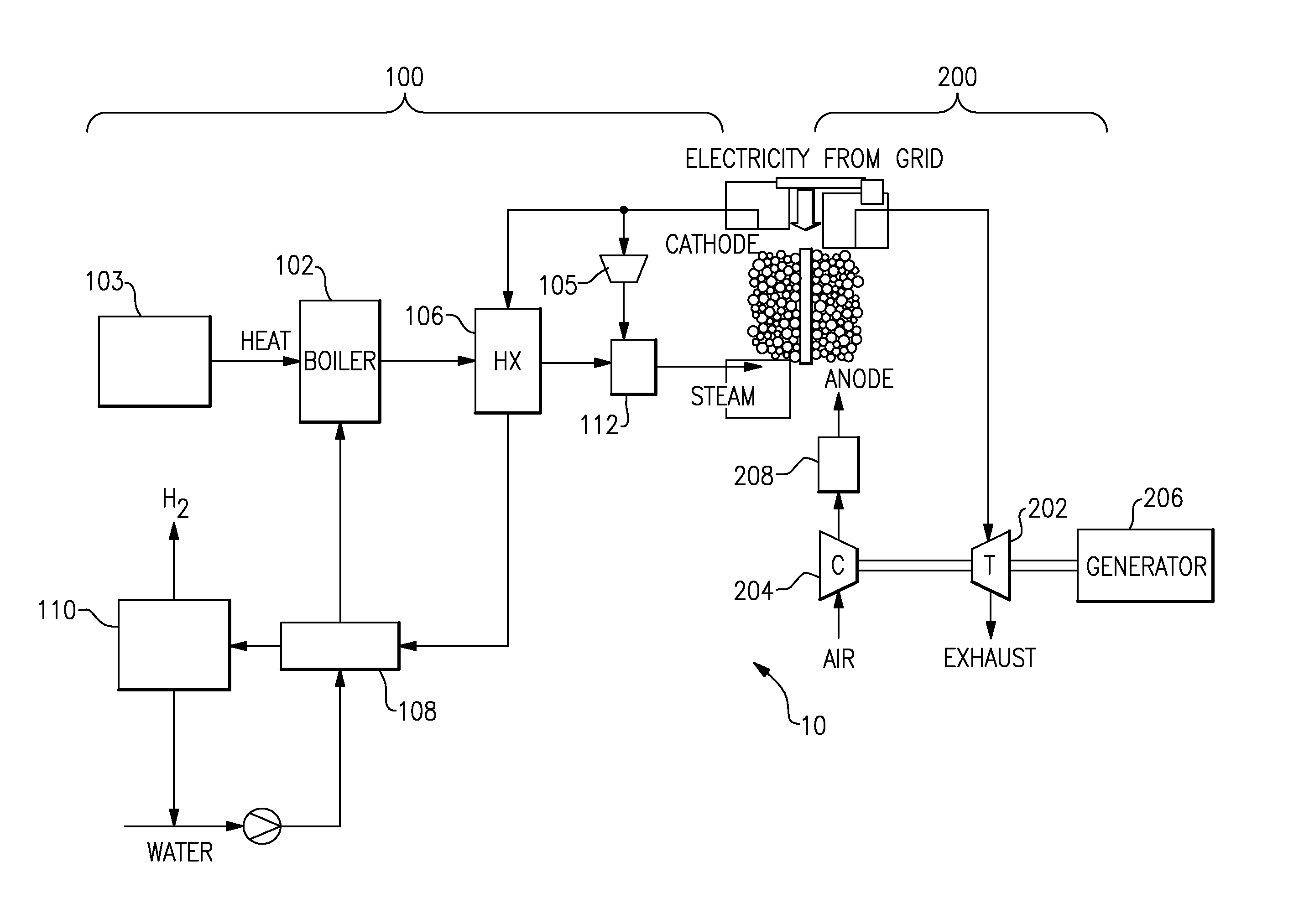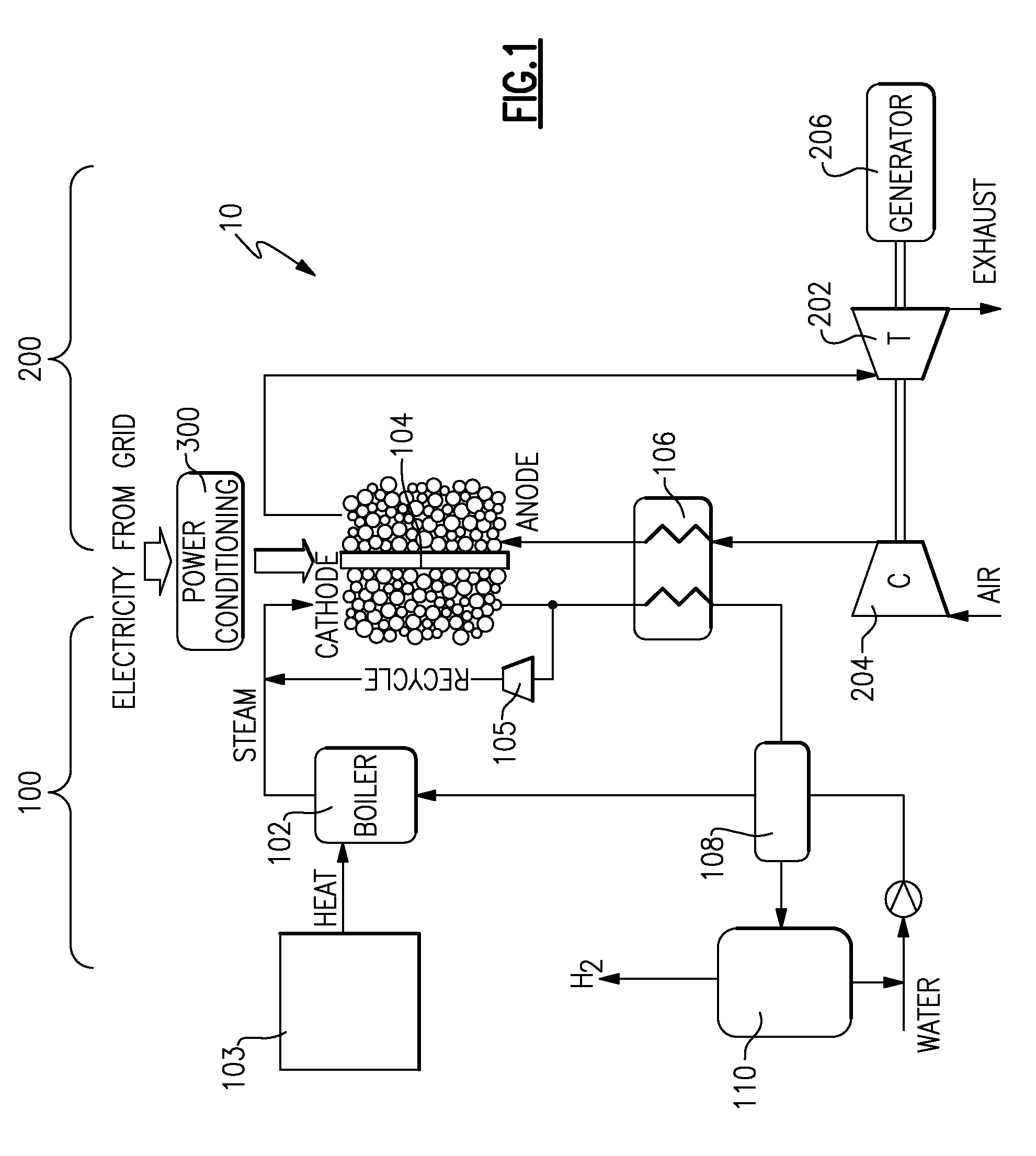System and method for the production of hydrogen
a technology of hydrogen and production method, applied in the field of system and a method for the production of hydrogen, can solve the problems of inequitable geographical distribution of global petroleum resources, affecting global climate disruption, and correlated consumption of fossil fuel with economic and population growth
- Summary
- Abstract
- Description
- Claims
- Application Information
AI Technical Summary
Benefits of technology
Problems solved by technology
Method used
Image
Examples
example
This numerical example has been performed to demonstrate one exemplary method of functioning of the hydrogen producing system. This example has been conducted to demonstrate the advantages that are available by generating hydrogen according to the disclosed method.
FIG. 3 is a depiction of the system upon which the numerical example was performed. FIG. 3 comprises the same elements depicted in the FIG. 1. Each element in the FIG. 3 however, has its inlet and outlet points numbered. Table 1 shows the respective values (at each of the inlet and outlet points) for the water / steam pressure and temperature for an optimized system that generates electricity and steam.
TABLE 1Point #Pressure (kg / cm2)Temperature (° C.)18.1875028.1675937.7179247.7179257.4871067.4871077.1837681.022098.7920.5108.59167118.33290128.08748137.88792147.88792151.02410161.0220176.8225
Referring now to FIG. 4, another embodiment of the hydrogen producing system 10 is shown and described. In the earlier embodiments shown ...
PUM
| Property | Measurement | Unit |
|---|---|---|
| temperature | aaaaa | aaaaa |
| temperature | aaaaa | aaaaa |
| temperature | aaaaa | aaaaa |
Abstract
Description
Claims
Application Information
 Login to View More
Login to View More - R&D
- Intellectual Property
- Life Sciences
- Materials
- Tech Scout
- Unparalleled Data Quality
- Higher Quality Content
- 60% Fewer Hallucinations
Browse by: Latest US Patents, China's latest patents, Technical Efficacy Thesaurus, Application Domain, Technology Topic, Popular Technical Reports.
© 2025 PatSnap. All rights reserved.Legal|Privacy policy|Modern Slavery Act Transparency Statement|Sitemap|About US| Contact US: help@patsnap.com



